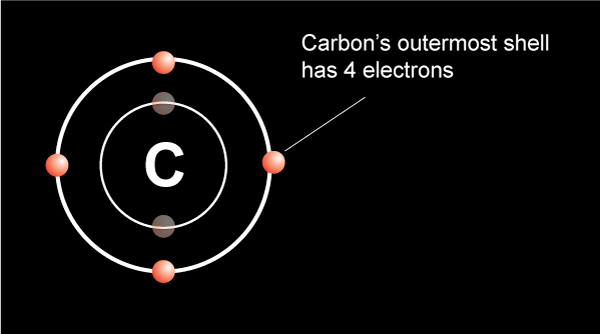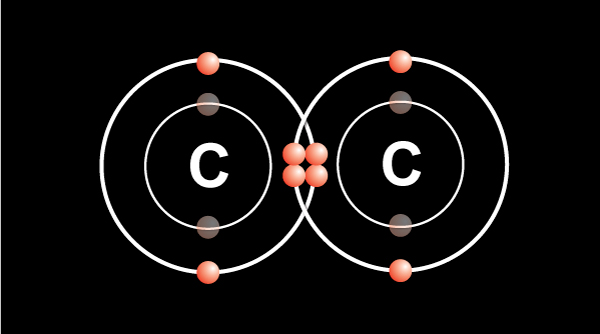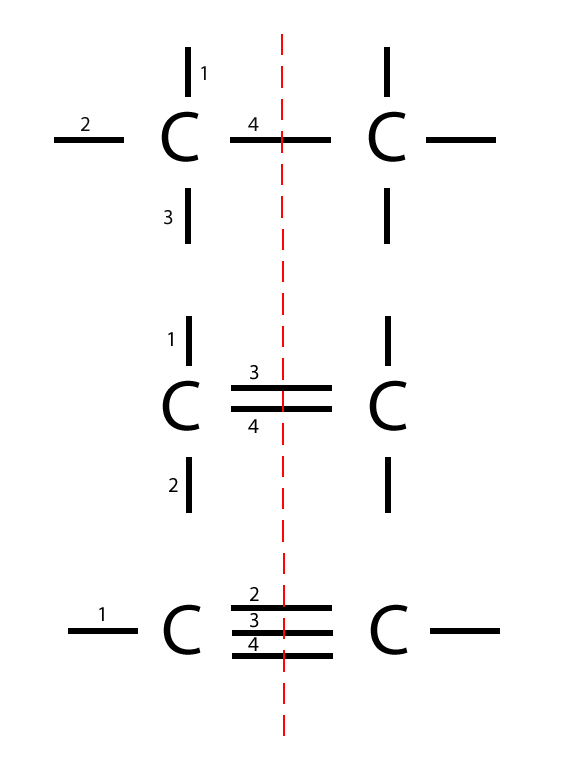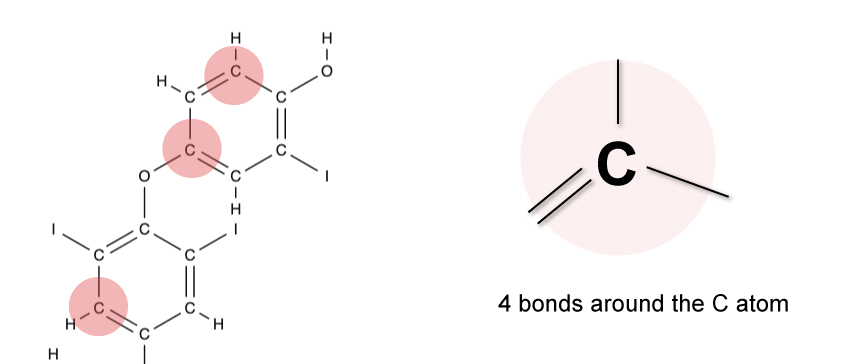Single Double And Triple Bonds

We know from the periodic tabular array that a carbon atom has 4 valence electrons in the outermost shell.

In order for the atom to be more stable, the outermost shell must exist filled upwardly.
Carbon follows the octet dominion of electron configuration. It ways the atom needs eight electrons in the outermost shell to be filled.
You can read more about the octet rule here.
When 2 carbon atoms bail together, they each share 1 electron to grade a unmarried bond.That leaves three valence electrons available for bonding.
Single, double, and triple bonds
Unmarried bond — one atom shared from each atom

Double bond — 2 atoms shared from each atom

Triple bond — 3 atoms shared from each cantlet

Pull a fast one on
Here'due south a trick – if yous draw a line through the middle between the bonds, you should exist able to work out exactly iv bonds on each side, because each carbon atom has iv bonding electrons which are the valence electrons.

Case
The diagram below shows role of a complex molecule that consists of single and double bonds.

Since carbon tin only form 4 bonds, the total number of bonds effectually each carbon atom must not exceed 4.
To achieve the octet rule, carbon must accept a total of four bonds.
Yous'll notice that around each carbon atom in the molecule, a full of 4 bonds must exist.
Single Double And Triple Bonds,
Source: https://surfguppy.com/polymers/carbon-carbon-single-double-triple-bonds/
Posted by: emersonwaallovar.blogspot.com


0 Response to "Single Double And Triple Bonds"
Post a Comment